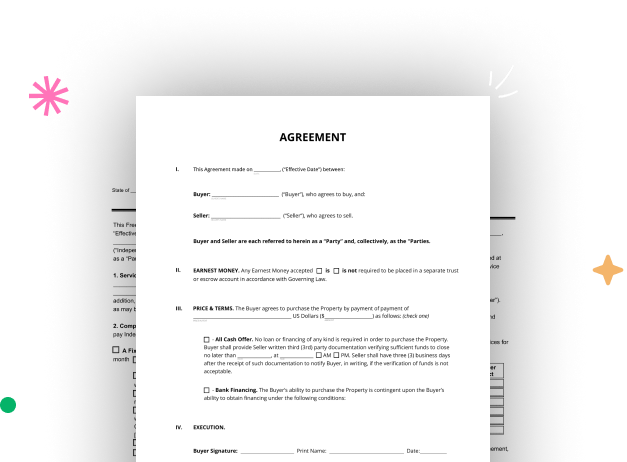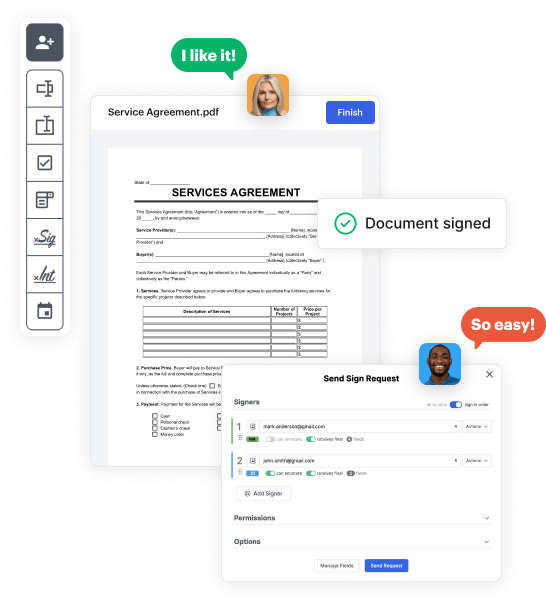

First, sign in to your DocHub account. If you don't have one, you can simply register for free.
Once you’re in, access your dashboard. This is your main hub for all document-related activities.
In your dashboard, hit New Document in the upper left corner. Choose Create Blank Document to create the Legal Letter Sample from a blank slate.
Place various elements like text boxes, photos, signature fields, and other elements to your form and assign these fields to particular recipients as necessary.
Refine your template by incorporating instructions or any other crucial information leveraging the text tool.
Attentively go over your created Legal Letter Sample for any typos or required adjustments. Utilize DocHub's editing features to fine-tune your template.
After finalizing, save your copy. You can select to save it within DocHub, export it to various storage solutions, or send it via a link or email.